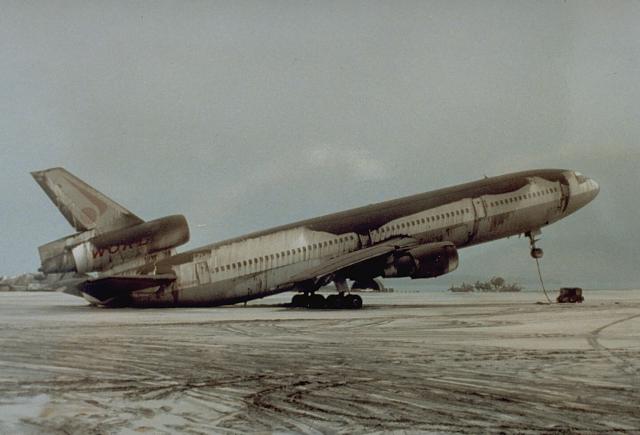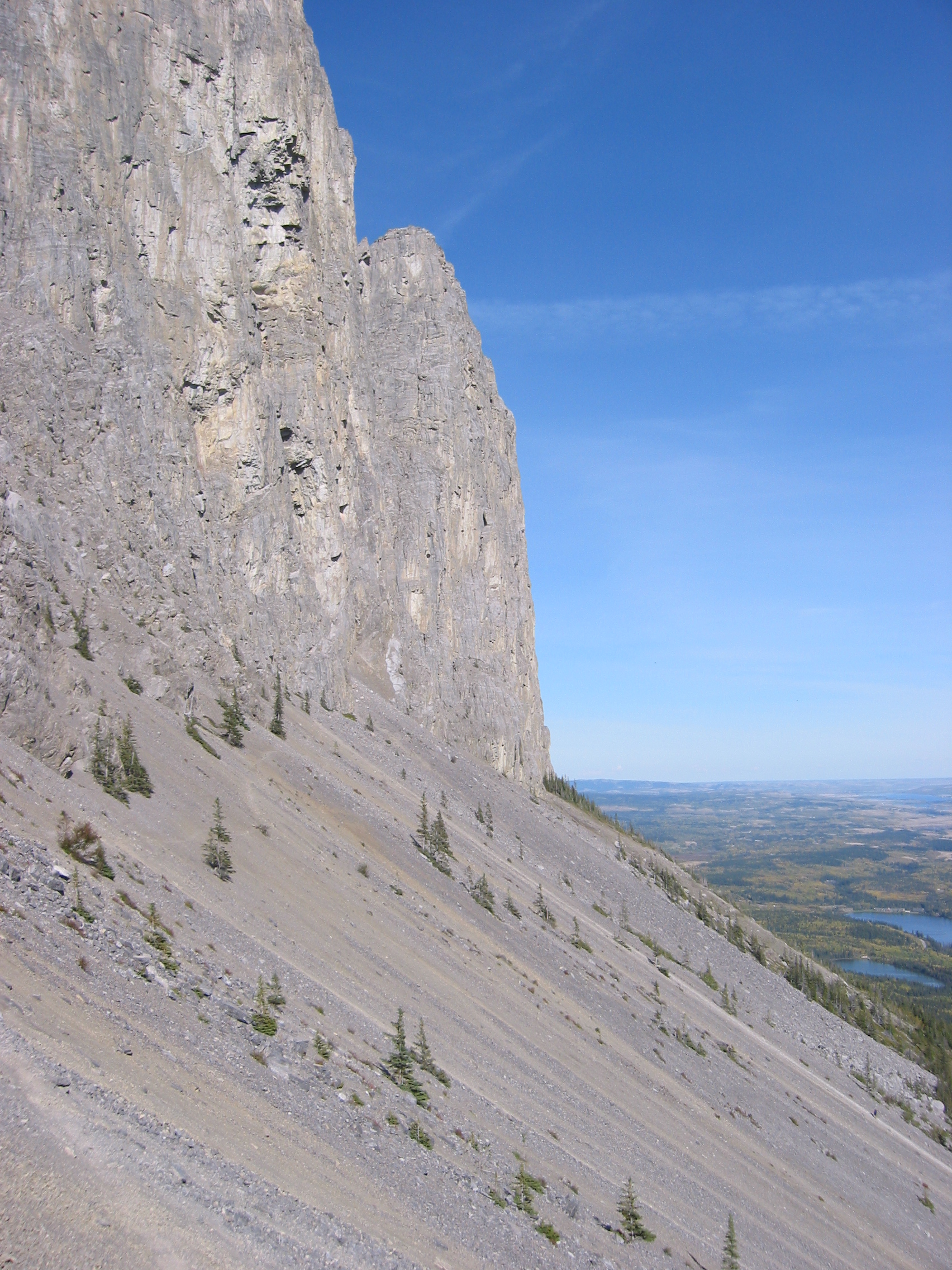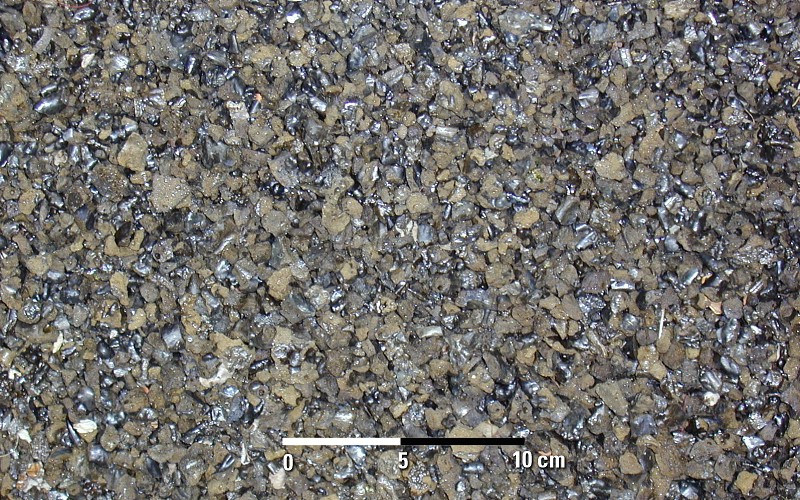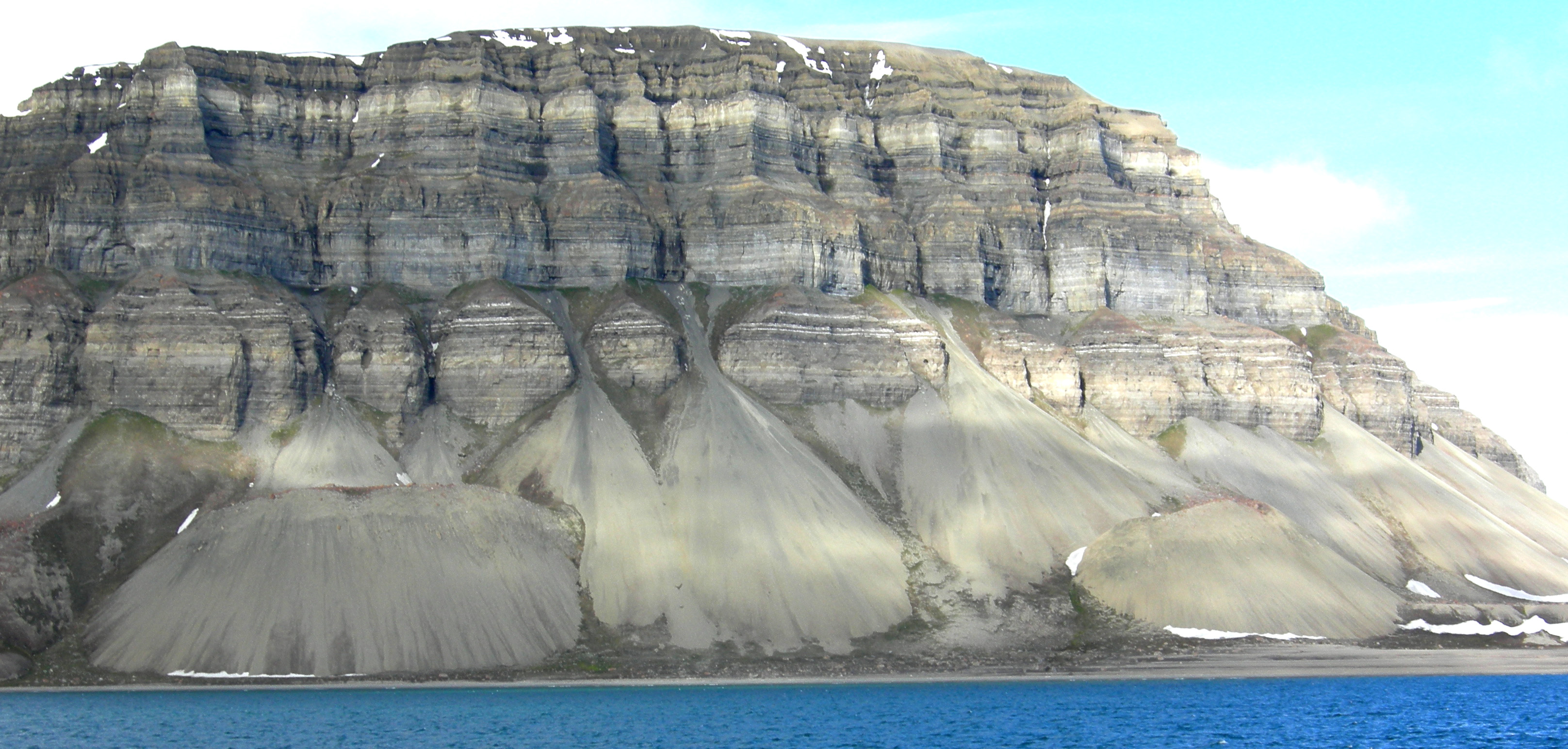|
Leskov Island
Leskov Island is one of the three Traversay Islands that form a subgroup of the South Sandwich Islands, in the Southern Ocean. The island is named after Russian sailor Arcady Leskov. It is a semicircular high eroded volcano with a large bay on its eastern side. Leskov Island is almost entirely surrounded by cliffs and has a surface area of . Volcanic rocks form tuffs and lava and consist almost entirely of andesite. There are no known historical eruptions, but there is widespread fumarolic activity which has varied over time. Mosses and liverworts grow next to the fumaroles, but this vegetation also occurs away from the vents. Several seabirds have been observed nesting on the island. Geography and geomorphology The South Sandwich Islands in the Southern Ocean, which include Leskov Island, lie at the eastern margin of the Scotia Sea and were discovered in 1775 by James Cook. The islands have had little human presence, with only sporadic research efforts during the 20th ... [...More Info...] [...Related Items...] OR: [Wikipedia] [Google] [Baidu] |
Traversay Islands
The Traversay Islands () are a group of three islands— Zavodovski, Leskov and Visokoi—at the northern end of the South Sandwich Islands in the South Atlantic Ocean. History The group was discovered in November 1819 by a Russian expedition under Bellingshausen, who named them for Jean-Baptiste Prevost de Sansac, Marquis de Traversay (1754–1831), a French naval officer who joined the Russian navy in 1791, at the request of an émigré Frenchman in Russian service, admiral Nassau-Siegen. He was Minister of Naval Affairs at Saint Petersburg, 1809–28, and chief promoter of Bellingshausen's Antarctic voyage. The name was previously transliterated as Traverse because it was incorrectly thought that the man commemorated was a Russian. Geography Zavodovski Island () lies southeast of South Georgia Island. It is the northernmost of the South Sandwich Islands and the nearest to South Georgia. The island is approximately across with a peak elevation of above sea level. The s ... [...More Info...] [...Related Items...] OR: [Wikipedia] [Google] [Baidu] |
Zavodovski Island
Zavodovski Island is an uninhabited volcanic island in the Traversay Islands subgroup of the South Sandwich Islands, which are located southeast of South Georgia in the South Atlantic Ocean. Zavodovski is the northernmost of the South Sandwich Islands and consists of one major stratovolcano, Mount Curry, which is surrounded to the east by a plain formed by lava flows. Mount Curry has a fumarolically active crater on the southwestern side, which also bears traces of a sector collapse. An eruption occurred in 2016. The island was officially discovered in December 1819 by Thaddeus von Bellingshausen. The largest penguin colony on Earth with over a million breeding pairs is situated on Zavodovski. It consists mostly of chinstrap penguins, although other seabirds and penguin species breed on the island as well. Early explorers noted the bad smell of the island, which is reflected in numerous placenames. Geography and geomorphology Zavodovski is the northernmost of the South ... [...More Info...] [...Related Items...] OR: [Wikipedia] [Google] [Baidu] |
Solifluction
Solifluction is a collective name for gradual processes in which a mass moves down a slope ("mass wasting") related to freeze-thaw activity. This is the standard modern meaning of solifluction, which differs from the original meaning given to it by Johan Gunnar Andersson Johan Gunnar Andersson (3 July 1874 – 29 October 1960)"Andersson, Johan Gunnar" in '' The New Encyclopædia Britannica''. Chicago: Encyclopædia Britannica Inc., 15th edn., 1992, Vol. 1, p. 385. was a Swedish archaeologist, geomorphologist, ... in 1906. Origin and evolution of the concept In the original sense it meant the movement of waste saturated in water found in periglaciation, periglacial regions. However it was later discovered that various slow waste movements in periglacial regions did not require saturation in water, but were rather associated to freeze-thaw processes. The term solifluction was appropriated to refer to these slow processes, and therefore excludes rapid periglacial movements. ... [...More Info...] [...Related Items...] OR: [Wikipedia] [Google] [Baidu] |
Pyroclastic Rock
Pyroclastic rocks are clastic rocks composed of rock fragments produced and ejected by explosive volcanic eruptions. The individual rock fragments are known as pyroclasts. Pyroclastic rocks are a type of volcaniclastic deposit, which are deposits made predominantly of volcanic particles. 'Phreatic' pyroclastic deposits are a variety of pyroclastic rock that forms from volcanic steam explosions and they are entirely made of accidental clasts. 'Phreatomagmatic' pyroclastic deposits are formed from explosive interaction of magma with groundwater. The word ''pyroclastic'' is derived from the Greek , meaning fire; and , meaning broken. Unconsolidated accumulations of pyroclasts are described as tephra. Tephra may become lithified to a pyroclastic rock by cementation or chemical reactions as the result of the passage of hot gases (fumarolic alteration) or groundwater (e.g. hydrothermal alteration and diagenesis) and burial, or, if it is emplaced at temperatures so hot that the soft gla ... [...More Info...] [...Related Items...] OR: [Wikipedia] [Google] [Baidu] |
Volcanic Ash
Volcanic ash consists of fragments of rock, mineral crystals, and volcanic glass, produced during volcanic eruptions and measuring less than 2 mm (0.079 inches) in diameter. The term volcanic ash is also often loosely used to refer to all explosive eruption products (correctly referred to as '' tephra''), including particles larger than 2 mm. Volcanic ash is formed during explosive volcanic eruptions when dissolved gases in magma expand and escape violently into the atmosphere. The force of the gases shatters the magma and propels it into the atmosphere where it solidifies into fragments of volcanic rock and glass. Ash is also produced when magma comes into contact with water during phreatomagmatic eruptions, causing the water to explosively flash to steam leading to shattering of magma. Once in the air, ash is transported by wind up to thousands of kilometres away. Due to its wide dispersal, ash can have a number of impacts on society, including animal a ... [...More Info...] [...Related Items...] OR: [Wikipedia] [Google] [Baidu] |
Scree
Scree is a collection of broken rock fragments at the base of a cliff or other steep rocky mass that has accumulated through periodic rockfall. Landforms associated with these materials are often called talus deposits. The term ''scree'' is applied both to an unstable steep mountain slope composed of rock fragments and other debris, and to the mixture of rock fragments and debris itself. It is loosely synonymous with talus, material that accumulates at the base of a projecting mass of rock, or talus slope, a landform composed of talus. The term ''scree'' is sometimes used more broadly for any sheet of loose rock fragments mantling a slope, while ''talus'' is used more narrowly for material that accumulates at the base of a cliff or other rocky slope from which it has obviously eroded. Scree is formed by rockfall, which distinguishes it from colluvium. Colluvium is rock fragments or soil deposited by rainwash, sheetwash, or slow downhill creep, usually at the base of gentle ... [...More Info...] [...Related Items...] OR: [Wikipedia] [Google] [Baidu] |
Lapilli
Lapilli (: lapillus) is a size classification of tephra, which is material that falls out of the air during a volcanic eruption or during some meteorite impacts. ''Lapilli'' is Latin for "little stones". By definition lapilli range from in diameter. A pyroclastic particle greater than 64 mm in diameter is known as a volcanic bomb when molten, or a volcanic block when solid. Pyroclastic material with particles less than 2 mm in diameter is referred to as volcanic ash. Formation Lapilli are spheroid-, teardrop-, dumbbell- or button-shaped droplets of molten or semi-molten lava ejected from a volcanic eruption that fall to earth while still at least partially molten. These granules are the direct result of liquid rock cooling as it travels through the air. Lapilli tuffs are a very common form of volcanic rock typical of rhyolite, andesite and dacite pyroclastic eruptions, where thick layers of lapilli can be deposited during a basal surge eruption. Most lapilli tuf ... [...More Info...] [...Related Items...] OR: [Wikipedia] [Google] [Baidu] |
Tuff
Tuff is a type of rock made of volcanic ash ejected from a vent during a volcanic eruption. Following ejection and deposition, the ash is lithified into a solid rock. Rock that contains greater than 75% ash is considered tuff, while rock containing 25% to 75% ash is described as ''tuffaceous'' (for example, ''tuffaceous sandstone''). A pyroclastic rock containing 25–75% volcanic bombs or volcanic blocks is called tuff breccia. Tuff composed of sandy volcanic material can be referred to as volcanic sandstone. Tuff is a relatively soft rock, so it has been used for construction since ancient times. Because it is common in Italy, the Romans used it often for construction. The Rapa Nui people used it to make most of the ''moai'' statues on Easter Island. Tuff can be classified as either igneous or sedimentary rock. It is usually studied in the context of igneous petrology, although it is sometimes described using sedimentological terms. Tuff is often erroneously called t ... [...More Info...] [...Related Items...] OR: [Wikipedia] [Google] [Baidu] |
Mass Failure
Mass wasting, also known as mass movement, is a general term for the movement of rock or soil down slopes under the force of gravity. It differs from other processes of erosion in that the debris transported by mass wasting is not entrained in a moving medium, such as water, wind, or ice. Types of mass wasting include creep, solifluction, rockfalls, debris flows, and landslides, each with its own characteristic features, and taking place over timescales from seconds to hundreds of years. Mass wasting occurs on both terrestrial and submarine slopes, and has been observed on Earth, Mars, Venus, Jupiter's moon Io, and on many other bodies in the Solar System. Subsidence is sometimes regarded as a form of mass wasting. A distinction is then made between mass wasting by subsidence, which involves little horizontal movement, and mass wasting by slope movement. Rapid mass wasting events, such as landslides, can be deadly and destructive. More gradual mass wasting, such as soil creep ... [...More Info...] [...Related Items...] OR: [Wikipedia] [Google] [Baidu] |
Cliff
In geography and geology, a cliff or rock face is an area of Rock (geology), rock which has a general angle defined by the vertical, or nearly vertical. Cliffs are formed by the processes of weathering and erosion, with the effect of gravity. Cliffs are common on coasts, in mountainous areas, escarpments and along rivers. Cliffs are usually composed of rock that is resistant to weathering and erosion. The sedimentary rocks that are most likely to form cliffs include sandstone, limestone, chalk, and Dolomite (rock), dolomite. Igneous rocks such as granite and basalt also often form cliffs. An escarpment (or scarp) is a type of cliff formed by the movement of a geologic fault, a landslide, or sometimes by rock slides or falling rocks which change the differential erosion of the rock layers. Most cliffs have some form of scree slope at their base. In arid areas or under high cliffs, they are generally exposed jumbles of fallen rock. In areas of higher moisture, a soil slope may ... [...More Info...] [...Related Items...] OR: [Wikipedia] [Google] [Baidu] |
Rudder Point
Leskov Island is one of the three Traversay Islands that form a subgroup of the South Sandwich Islands, in the Southern Ocean. The island is named after Russian sailor Arcady Leskov. It is a semicircular high eroded volcano with a large bay on its eastern side. Leskov Island is almost entirely surrounded by cliffs and has a surface area of . Volcanic rocks form tuffs and lava and consist almost entirely of andesite. There are no known historical eruptions, but there is widespread fumarolic activity which has varied over time. Mosses and liverworts grow next to the fumaroles, but this vegetation also occurs away from the vents. Several seabirds have been observed nesting on the island. Geography and geomorphology The South Sandwich Islands in the Southern Ocean, which include Leskov Island, lie at the eastern margin of the Scotia Sea and were discovered in 1775 by James Cook. The islands have had little human presence, with only sporadic research efforts during the 20th a ... [...More Info...] [...Related Items...] OR: [Wikipedia] [Google] [Baidu] |






